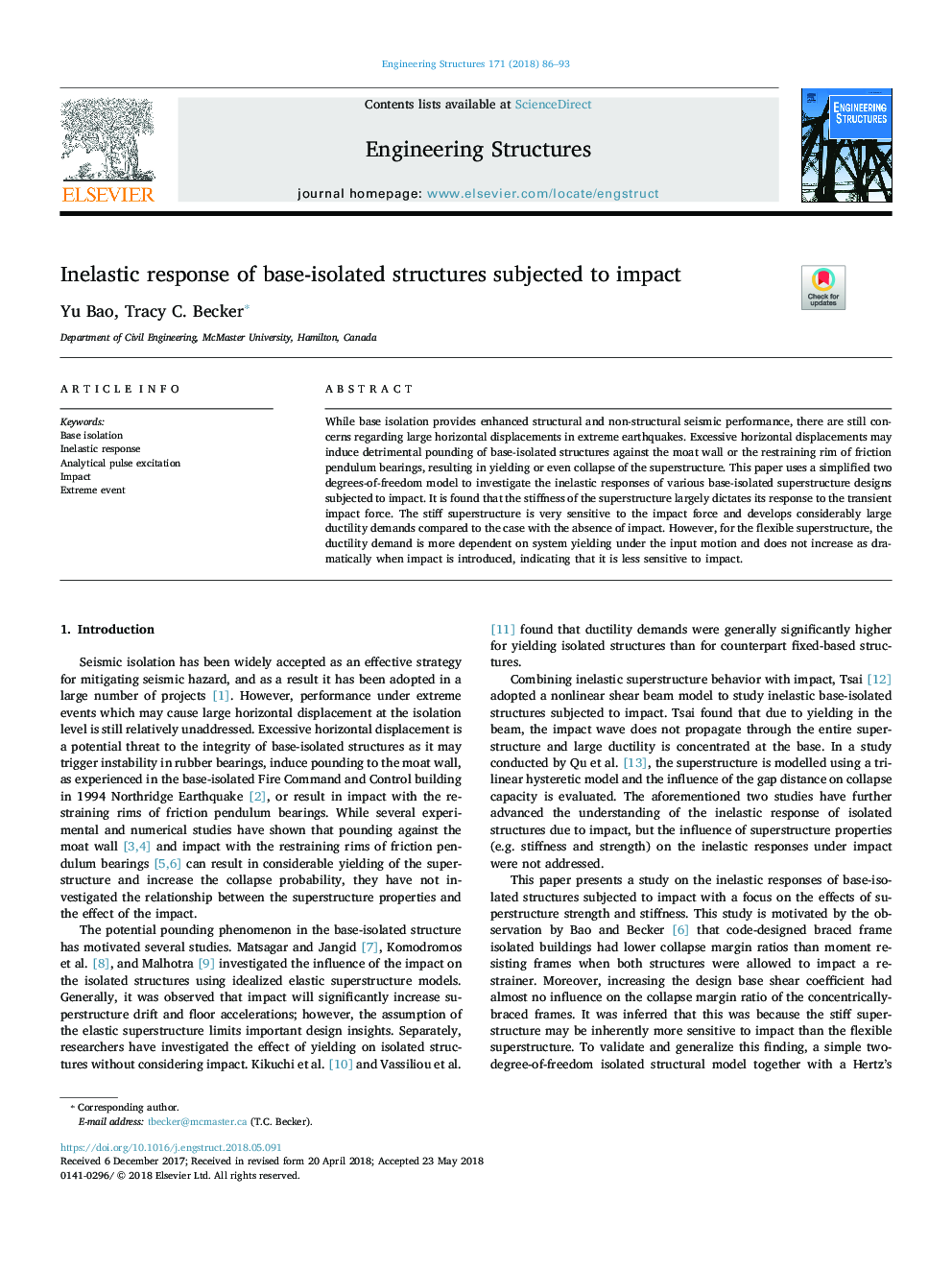| Article ID | Journal | Published Year | Pages | File Type |
|---|---|---|---|---|
| 6736046 | Engineering Structures | 2018 | 8 Pages |
Abstract
While base isolation provides enhanced structural and non-structural seismic performance, there are still concerns regarding large horizontal displacements in extreme earthquakes. Excessive horizontal displacements may induce detrimental pounding of base-isolated structures against the moat wall or the restraining rim of friction pendulum bearings, resulting in yielding or even collapse of the superstructure. This paper uses a simplified two degrees-of-freedom model to investigate the inelastic responses of various base-isolated superstructure designs subjected to impact. It is found that the stiffness of the superstructure largely dictates its response to the transient impact force. The stiff superstructure is very sensitive to the impact force and develops considerably large ductility demands compared to the case with the absence of impact. However, for the flexible superstructure, the ductility demand is more dependent on system yielding under the input motion and does not increase as dramatically when impact is introduced, indicating that it is less sensitive to impact.
Related Topics
Physical Sciences and Engineering
Earth and Planetary Sciences
Geotechnical Engineering and Engineering Geology
Authors
Yu Bao, Tracy C. Becker,
